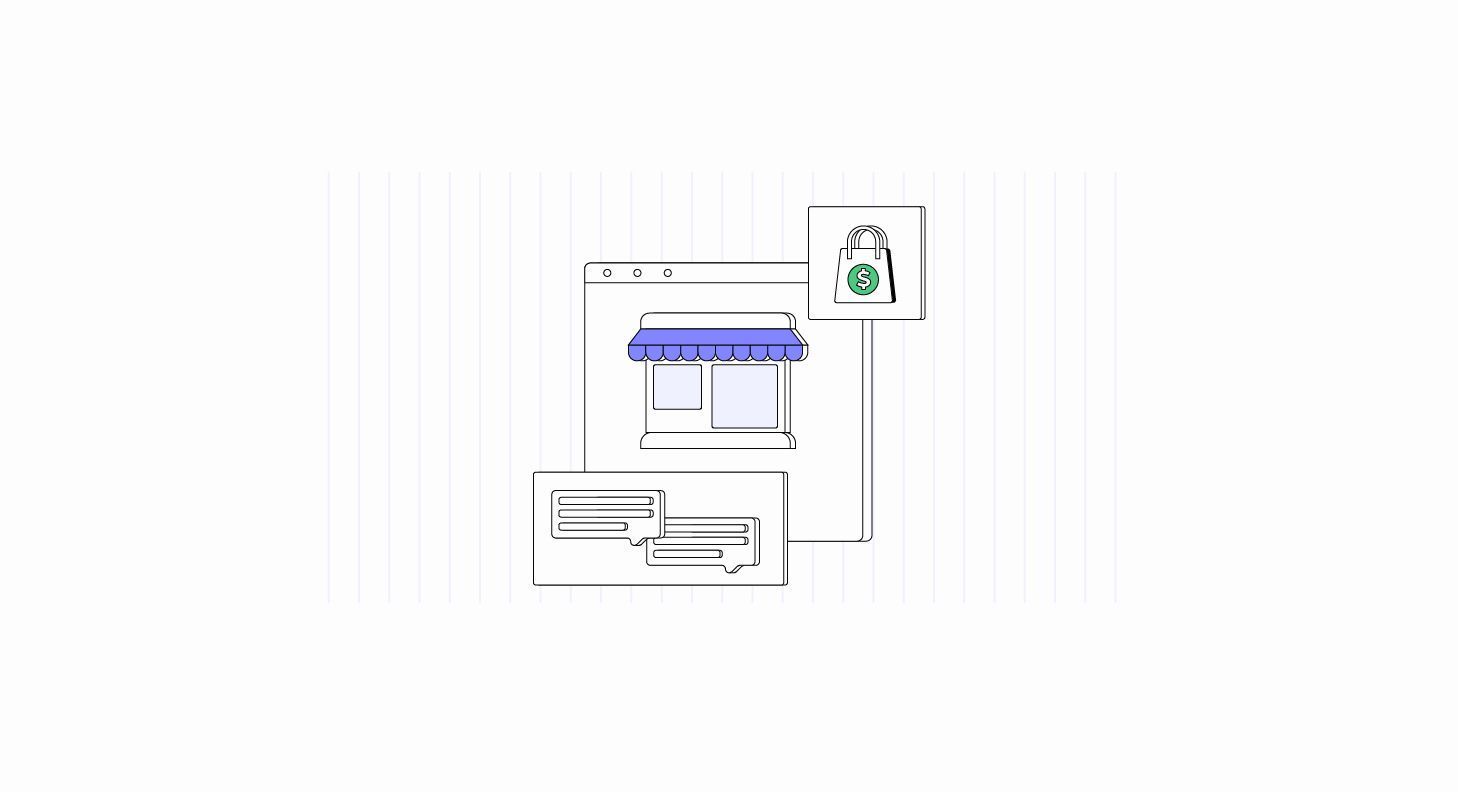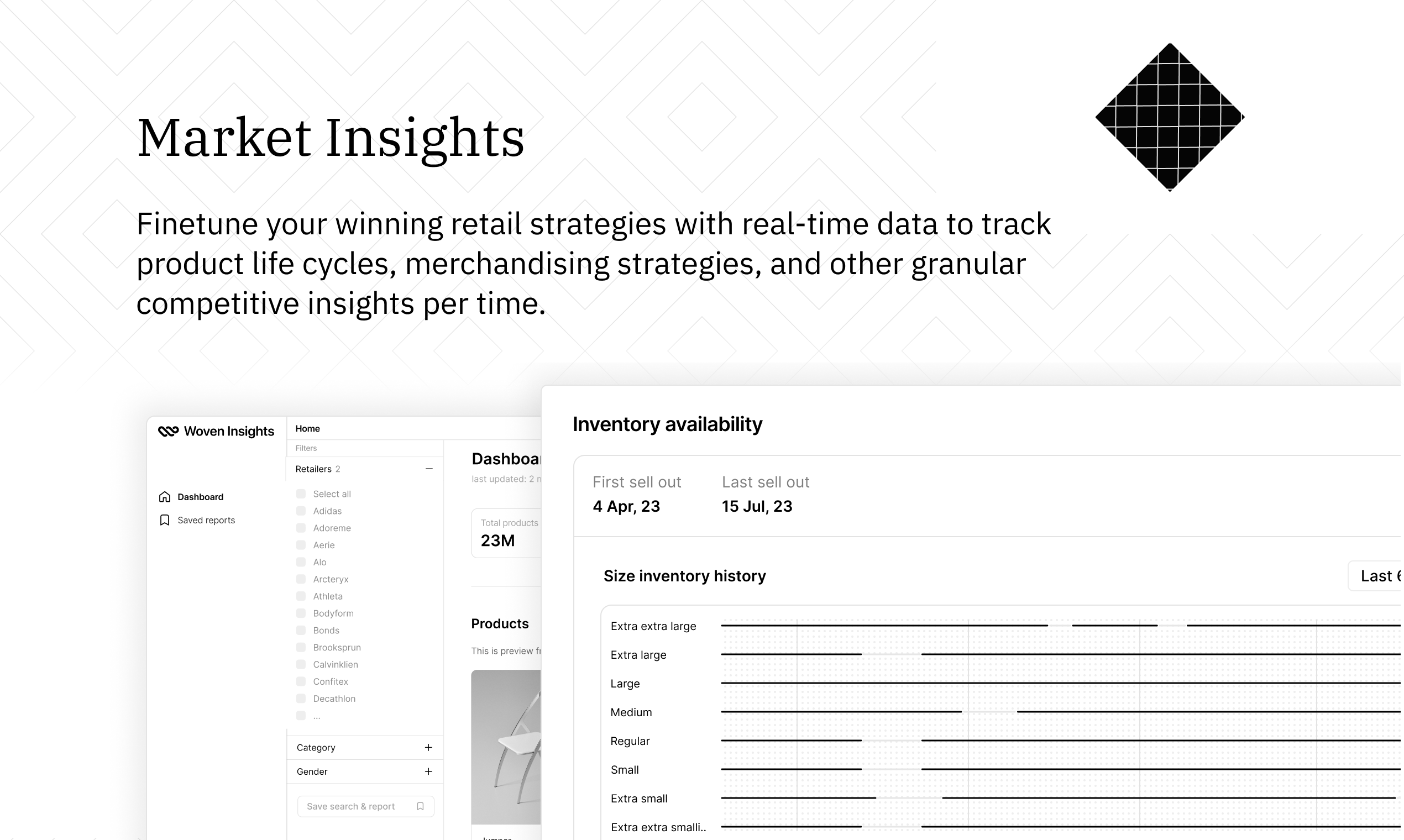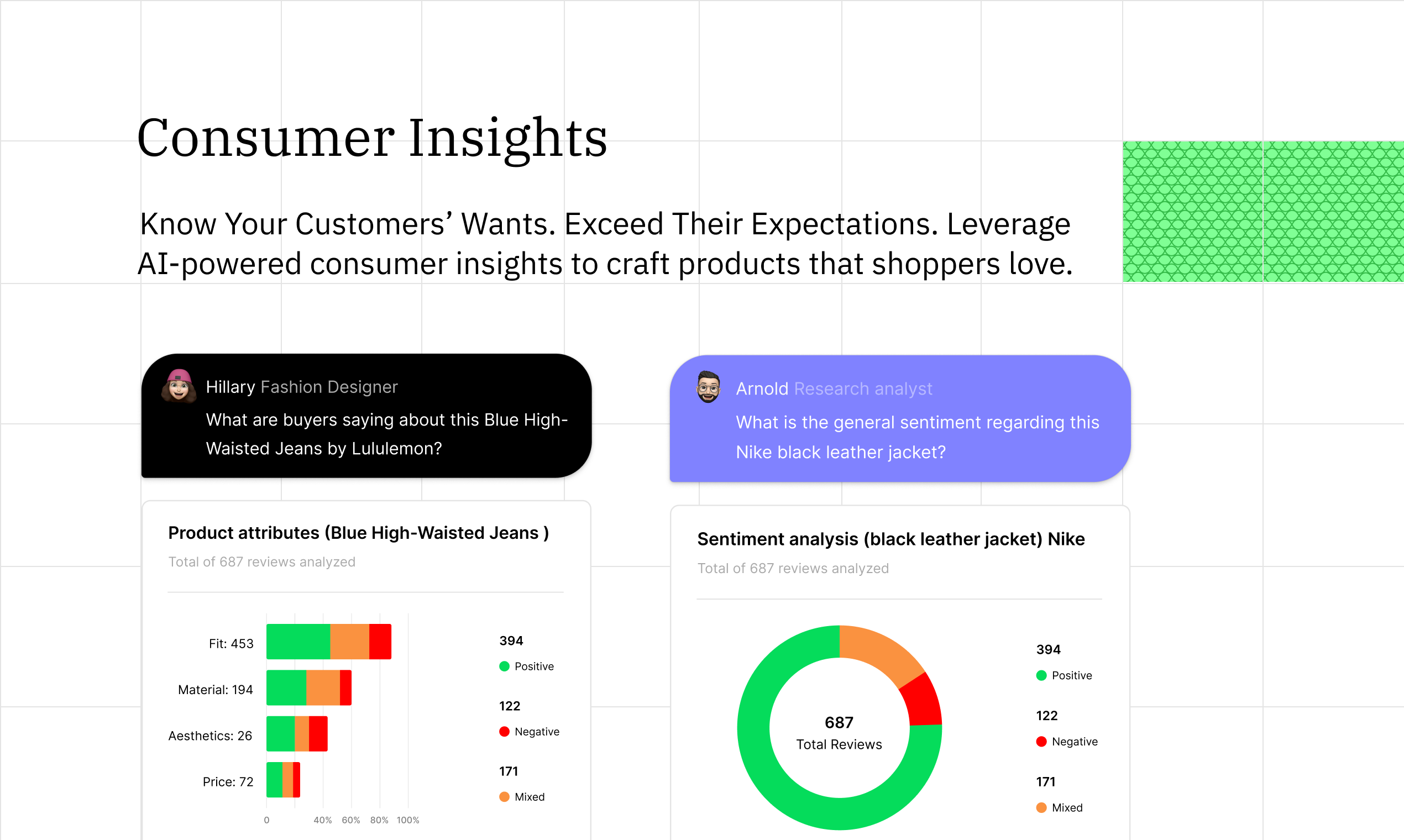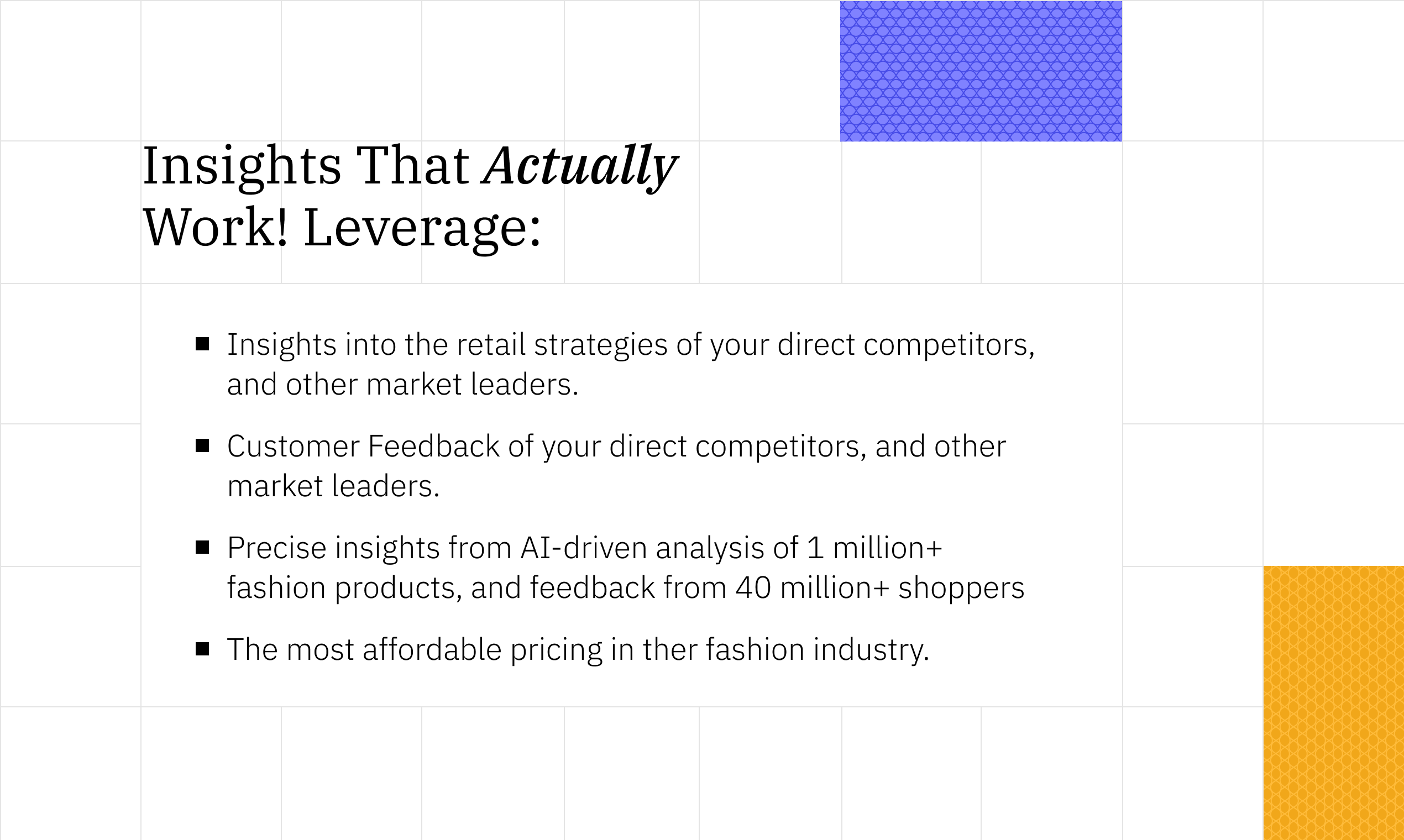Leveraging Customer Reviews For Small-Sized Fashion Brands
Dive into the world of customer reviews, and discover how small-mid sized fashion brands can elevate their game and become true contenders in the fashion industry.

Customer feedback has evolved into a potent force, capable of shaping the destiny of brands, both big and small. The rise of online shopping and the prevalence of e-commerce have given customers a megaphone to express their opinions, concerns, and desires.
For small to mid-sized fashion brands, this transformation has opened doors to a wealth of valuable insights. The key to unlocking these insights lies in the customer reviews that they and their competitors receive. While industry giants have the resources to conduct extensive market research and surveys, smaller players can leverage the goldmine of feedback that is readily available at their fingertips.
In this article, we explore how small to mid-sized fashion brands can harness the power of these unfiltered opinions to not just survive but thrive in a competitive market.
The Power of Customer Reviews
Understanding Customer Feedback
In the bustling realm of fashion, customer reviews are more than mere comments on a webpage; they are windows into the hearts and minds of consumers. For small to mid-sized fashion brands, these reviews are invaluable, offering a direct and unfiltered line of communication with their customers. Here's why understanding and leveraging customer feedback is a game-changer:
- Authentic Voices: Customer reviews are authentic and unfiltered. They capture the genuine thoughts and feelings of your customers. In a world where marketing messages can sometimes seem rehearsed or even insincere, these unvarnished opinions are a breath of fresh air. This is why the most basic-yet-authentic reviews are more important to shoppers than even the most beautifully-crafted product descriptions.
- Constructive Critique: For small fashion brands, reviews provide constructive critique that can be challenging to obtain through traditional market research methods. Customers share their honest experiences, highlighting aspects they loved and areas where they were less satisfied. This candid feedback is invaluable for making improvements.
- Responsive Engagement: When customers take the time to write a review, they appreciate being heard. Small brands have a unique opportunity to engage directly with their customers by responding to reviews, showing that they value customer input. This not only builds trust but also opens a channel for two-way communication.
Trust and Credibility
In a world where consumers have an overwhelming array of choices, trust and credibility are paramount for a fashion brand. This is where customer reviews shine as trust-building tools:
- Word-of-Mouth Marketing: Positive reviews serve as powerful word-of-mouth marketing. When potential customers see that others have had positive experiences, they're more likely to trust your brand.
- Transparent and Authentic: Reviews provide transparency and authenticity, two qualities that modern consumers crave. They want to know what to expect, and reviews offer a sneak peek into the real-world experiences of others.
- Reputation Management: A positive stream of reviews contributes to a strong online reputation. For small to mid-sized fashion brands, a sterling online reputation can make all the difference in attracting new customers.
By embracing and effectively utilizing these reviews, small brands can establish themselves as reliable and customer-focused players in the fashion industry.
Analyzing Your Own Customer Reviews
Gathering Customer Feedback
Small to mid-sized fashion brands are often closer to their customers than large corporations. They enjoy a unique advantage: a direct line of communication through customer reviews. These reviews, whether posted on your website, social media, or third-party platforms, provide valuable insights into the hearts and minds of your customers.
Review Collection Strategies: To make the most of this resource, small brands should implement effective review collection strategies. Encourage customers to leave reviews after a purchase by sending post-purchase emails, including review request forms with shipments, or incentivizing feedback with discounts or exclusive offers. Additionally, consider using specialized review management platforms like Reviews.io that streamline the collection process, and Retail Market & Consumer Insights solutions like Woven Insights that provide analytics tools for better understanding.
Diversity in Feedback: Remember that a wider range of feedback is more beneficial. Not all customers will be satisfied, and that's perfectly normal. Constructive criticism is a valuable tool for improvement, so don't shy away from less-than-perfect reviews. The variety of feedback can provide a holistic view of your brand's performance.
Identifying Pain Points
An essential aspect of review analysis is identifying pain points in your customers' experiences. Small to mid-sized brands have the agility to address these issues swiftly, and this can be a substantial competitive advantage.
Identifying Common Issues: When analyzing your reviews, pay close attention to recurring themes. Are there specific problems or concerns that multiple customers have highlighted? It could be issues with sizing, shipping times, or product quality. Identifying these common pain points allows you to prioritize solutions.
Giving Timely Responses: Be proactive in responding to negative reviews. Acknowledge the customer's concerns and express a willingness to address the issue. Demonstrating responsiveness shows that you care about your customers' satisfaction, which can mitigate the impact of negative feedback.
Incorporating Feedback: Make use of the identified pain points to implement changes. Whether it's redesigning a product, adjusting your return policy, or optimizing your website for a smoother shopping experience, incorporating customer feedback into your business decisions can lead to tangible improvements.
Leveraging Positive Feedback
While addressing pain points is crucial, small to mid-sized fashion brands should also leverage positive feedback to strengthen their brand identity and customer relationships.
Showcasing Positive Testimonials: Identify the most glowing testimonials and showcase them prominently on your website or marketing materials. Testimonials are powerful endorsements of your brand's quality and customer satisfaction.
Customer Stories: Encourage customers to share their stories of how your products have positively impacted their lives. These stories add depth to your brand narrative and can emotionally resonate with potential customers.
Engaging with Advocates: Identify your most loyal customers, particularly those who have left consistently positive reviews. Engage with them, thank them for their support, and consider building a brand ambassador program. Loyal customers can be your best advocates and help spread the word about your brand.
Competitive Analysis through Customer Reviews
Understanding the Competition
Understanding your competitors is a pivotal aspect of staying relevant and competitive. Customer reviews can offer an invaluable vantage point for small to mid-sized fashion brands seeking to decipher the strategies and strengths of their competitors. After all, who better to hear about a product from, than the people who actually use it?
Review Analysis of Competitors: Start by thoroughly examining the reviews of your competitors. Look for patterns and trends in what customers are praising or criticizing. Are there recurring themes in their reviews? Is there an area where your competitors excel or fall short?
Strengths and Weaknesses: Use customer reviews to assess your competitors' strengths and weaknesses. Perhaps a competing brand excels in customer service but lags behind in product quality. Identifying these aspects can guide your own business strategies and areas of focus.
Identify Market Gaps: By analyzing the reviews of competitors, you might uncover unmet customer needs or common complaints. This can lead to opportunities for your brand to step in and address these gaps.
Spotting Market Trends
Customer reviews offer a unique lens through which small to mid-sized fashion brands can spot market trends and stay attuned to shifting consumer preferences.
Product Trends: Analyze competitor reviews to identify product trends that resonate with customers. Are there certain styles, features, or materials that are consistently praised? These insights can inform your product development and design.
Consumer Preferences: Customer reviews reveal evolving consumer preferences. Pay attention to changes in buying patterns and consumer sentiments. Whether it's a surge in demand for eco-friendly fashion or a shift toward sustainable materials, understanding these preferences can be a game-changer.
Pricing and Value: Reviews often include mentions of pricing and value for money. Evaluate how competitors are perceived in terms of pricing. Are they offering premium products at higher prices, or are they competing on affordability and value? This information can guide your own pricing strategies.
Adapting Strategies
Competitor analysis through customer reviews isn't about mimicking the competition but adapting your strategies to stay competitive and innovative.
Innovation Inspiration: Use competitor reviews as a source of innovation inspiration. Identify areas where competitors are receiving high praise, and consider how you can incorporate similar features or practices into your business.
Addressing Pain Points: Similarly, look for common pain points raised in competitor reviews. If customers frequently criticize aspects that your brand excels in, you can emphasize these strengths in your marketing.
Positioning: Use your insights to refine your brand's positioning. Emphasize the unique value propositions and strengths that set you apart from competitors. Customer reviews can provide valuable content for conveying these messages to your target audience.
The insights gained through competitor analysis empower you to make informed decisions and refine your strategies, positioning your brand as a serious contender.
Incorporating Customer Insights into Product Development
Product Enhancement
Small to mid-sized fashion brands can harness the power of customer reviews to enhance their product development process. These insights can act as a guiding light, helping you create products that truly resonate with your target audience.
Identifying Product Issues: One of the most significant advantages of customer reviews is the ability to pinpoint product issues. Reviews might reveal recurring complaints about issues such as sizing, comfort, or durability. By addressing these concerns, you can improve your product's quality and customer satisfaction.
Iterative Design: Use reviews to inform iterative design. For example, if a new clothing line receives feedback about a particular aspect, consider making adjustments for future designs. Iteration is a hallmark of successful product development and can set your brand apart.
Quality Assurance: Customer reviews can function as an integral part of your quality assurance process. If a product consistently receives negative feedback about a specific issue, consider implementing stricter quality control measures for future production.
Innovative Design
Fashion is inherently about innovation and creativity. Customer insights from reviews can serve as a wellspring of inspiration for innovative design concepts.
Inspired by Customer Preferences: Pay attention to the elements that customers appreciate the most. Is there a particular style, feature, or detail that frequently receives praise? Use this insight to design new products or iterate on existing ones to align with customer preferences.
Sustainability and Ethics: Customer reviews may also reflect growing concerns about sustainability and ethical production. If customers value these aspects, consider incorporating eco-friendly materials, ethical manufacturing practices, or other sustainable initiatives into your design and production processes.
Unique Selling Points: Innovate by incorporating unique selling points into your designs based on customer feedback. This could be distinctive features, customization options, or exclusive collaborations that set your brand apart.
Listening and Learning
The key to effectively incorporating customer insights into product development lies in active listening and a genuine commitment to learning from feedback.
Feedback Collection: Continue to actively collect and monitor customer feedback. Encourage customers to share their opinions, whether through post-purchase emails, surveys, or social media interactions. The more feedback you gather, the more robust your insights become.
Feedback Integration: Ensure that customer insights are integrated into your product development cycle. Create a system that takes reviews into account when designing, manufacturing, and launching new products.
Flexibility and Adaptability: Embrace a culture of flexibility and adaptability. Customer preferences and trends can shift rapidly in the fashion industry. Be prepared to pivot your designs and product strategies based on the insights you gain from reviews.
Leveraging Customer Reviews in Marketing
Crafting Authentic Messaging
The authenticity of your brand's messaging is a critical aspect of marketing, especially for small to mid-sized fashion brands. Customer reviews can be powerful tools for crafting authentic and compelling marketing messages.
Customer Voices in Advertising: Incorporate snippets from customer reviews in your advertising materials. Whether it's a heartwarming testimonial or a customer raving about your product, these voices can add authenticity and credibility to your marketing campaigns.
User-Generated Content: Encourage customers to share their experiences through photos, videos, or stories on social media. Repost this user-generated content on your brand's channels. It not only showcases real customers but also demonstrates your appreciation for their involvement.
Highlighting Real-Life Experiences: Use reviews to highlight the real-life experiences customers have with your products. Whether it's a customer's excitement about receiving their purchase or the joy it brought them, these emotional connections resonate with potential buyers.
Building Customer Trust
In marketing, trust is a valuable currency. Small to mid-sized fashion brands can leverage customer reviews to build and reinforce trust with their target audience.
Social Proof: What better form of social proof than customer reviews? When potential customers see that others have had positive experiences with your brand, it boosts trust. Highlight the number of satisfied customers, high ratings, or the volume of positive reviews in your marketing materials.
Case Studies: Develop customer case studies that delve into real experiences. These stories can serve as powerful marketing tools, showcasing how your products positively impact customers' lives.
Transparency: Small brands can differentiate themselves by being transparent about customer feedback. Acknowledge that your brand values both positive and negative feedback and actively uses it to improve. This level of transparency can resonate with customers who appreciate honesty.
Conclusion: The Future of Customer Review Analysis
Emerging Technologies
The future of customer review analysis holds immense promise for small to mid-sized fashion brands seeking to stay ahead of the curve. Emerging technologies, such as Artificial Intelligence (AI), are poised to revolutionize the way businesses harness customer insights.
AI-Powered Insights: One of the most exciting developments is the rise of AI-powered solutions like Retail Intelligence. These platforms use advanced algorithms to not only collect and organize customer reviews but to extract meaningful insights. For small to mid-sized fashion brands, this means a data-driven approach to decision-making that was once the domain of larger corporations.
Scalability and Affordability: What sets Retail Intelligence apart is its scalability and affordability. Smaller brands can access sophisticated AI analytics without breaking the bank. This levels the playing field, giving them access to the same analytical capabilities as industry giants.
The Role of Data in Decision-Making
The fashion industry, more than ever, is becoming a data-driven ecosystem. Customer insights, as gleaned from reviews, have evolved into a critical aspect of decision-making for brands of all sizes.
Data-Backed Strategies: With Retail Intelligence, you can back your strategies with data. This not only enhances the chances of making informed and successful decisions but also aligns your operations with the ever-evolving landscape of the industry.
Proactive Adaptation: Brands that harness data are better equipped to proactively adapt to changing market trends and consumer preferences. Retail Intelligence offers the means to predict shifts and adjust strategies accordingly.
Customer-Centric Approach: The future of fashion belongs to brands that adopt a customer-centric approach. By leveraging data from customer reviews, small to mid-sized fashion businesses can align themselves with this trend. The ability to identify customer pain points and innovate accordingly is a key differentiator.
The Role of Woven Insights
As we peer into the future of the fashion industry, it becomes evident that small to mid-sized fashion brands can thrive by embracing the data-driven revolution. This is where Woven Insights steps into the spotlight as a valuable analytics solution tailored to the needs of smaller fashion businesses.
Accessible Insights: Woven Insights provides these brands with accessible insights into their own customer reviews, those of their competitors, and broader market trends. This accessibility empowers small businesses to make informed decisions with confidence.
Affordability: Unlike many costly market research solutions, Woven Insights is designed to be affordable for smaller brands. It ensures that even those with limited budgets can harness the power of AI-driven insights.
Competitive Edge: As small to mid-sized fashion brands navigate the dynamic landscape of the industry, Woven Insights equips them with a competitive edge. It's the tool that allows these brands to not just survive but thrive in an environment where customer insights are currency.
Conclusion
In the fashion landscape, characterized by rapid change and evolving customer preferences, the ability to make data-driven decisions is the linchpin of success.
Woven Insights, with its focus on affordability, accessibility, and actionable insights, emerges as a trusted ally for small to mid-sized fashion businesses seeking to leverage the goldmine of consumer insights.
Gone are the days when actionable fashion analytics was accessible only to larger, more financially robust fashion businesses. We are democratizing fashion intelligence with the most affordable pricing in the industry.



Join the market leaders, and gain a high-level understanding of the fashion market, by leveraging insights from more than 40 million online shoppers and 2 million+ products from more than 120 of the top global fashion brands.
